Sum-it Card Game
‘Sum-it’ Card Game published by Sum-It Card Games Ltd. c.1935.
Sum-it Card Game is an educational game designed by Norman D. Vine and published by Sum-It Card Game Ltd., Leeds (UK), c.1935. Norman D. Vine was later to become the Lord Mayor of Leeds. The first aeroplane flight over Mount Everest was in 1933 and this is what is depicted on the box and early backs of the cards. It seems highly likely that the game was named after this feat so maybe it was first published in around 1933 or 1934.
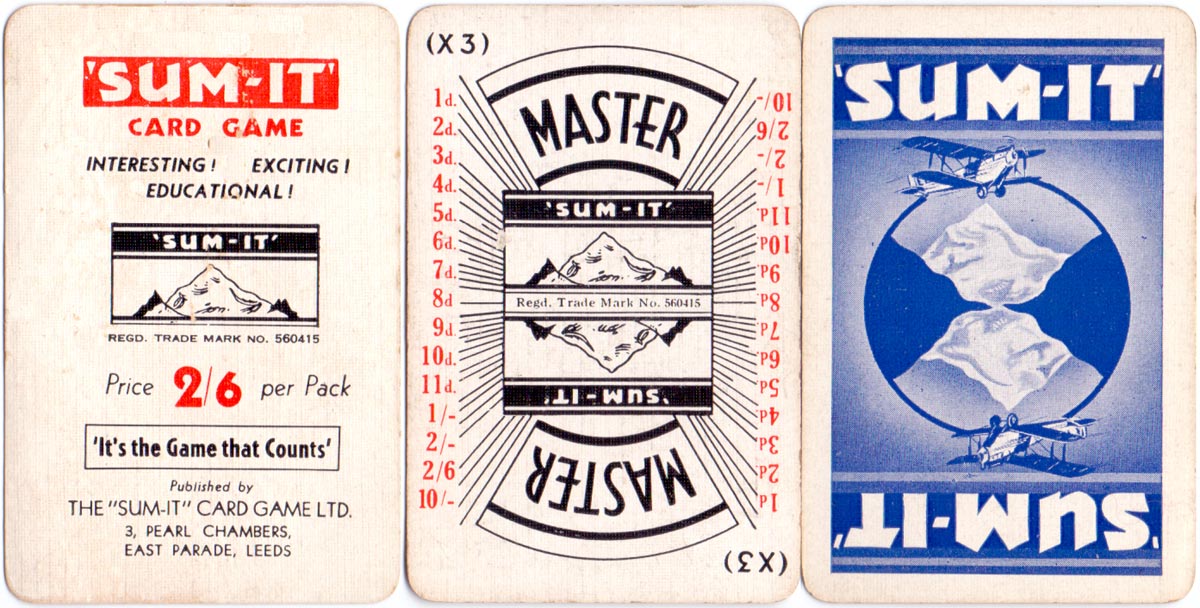
Above: the title card describes the game as “interesting, exciting and educational”. The ‘Master’ card is a sort of wild card which can be used as any value. The image of a bi-plane flying over high mountains evokes the sense of awe and wonder associated with adventure, maybe reminiscent of the 1933 British Mount Everest expedition.
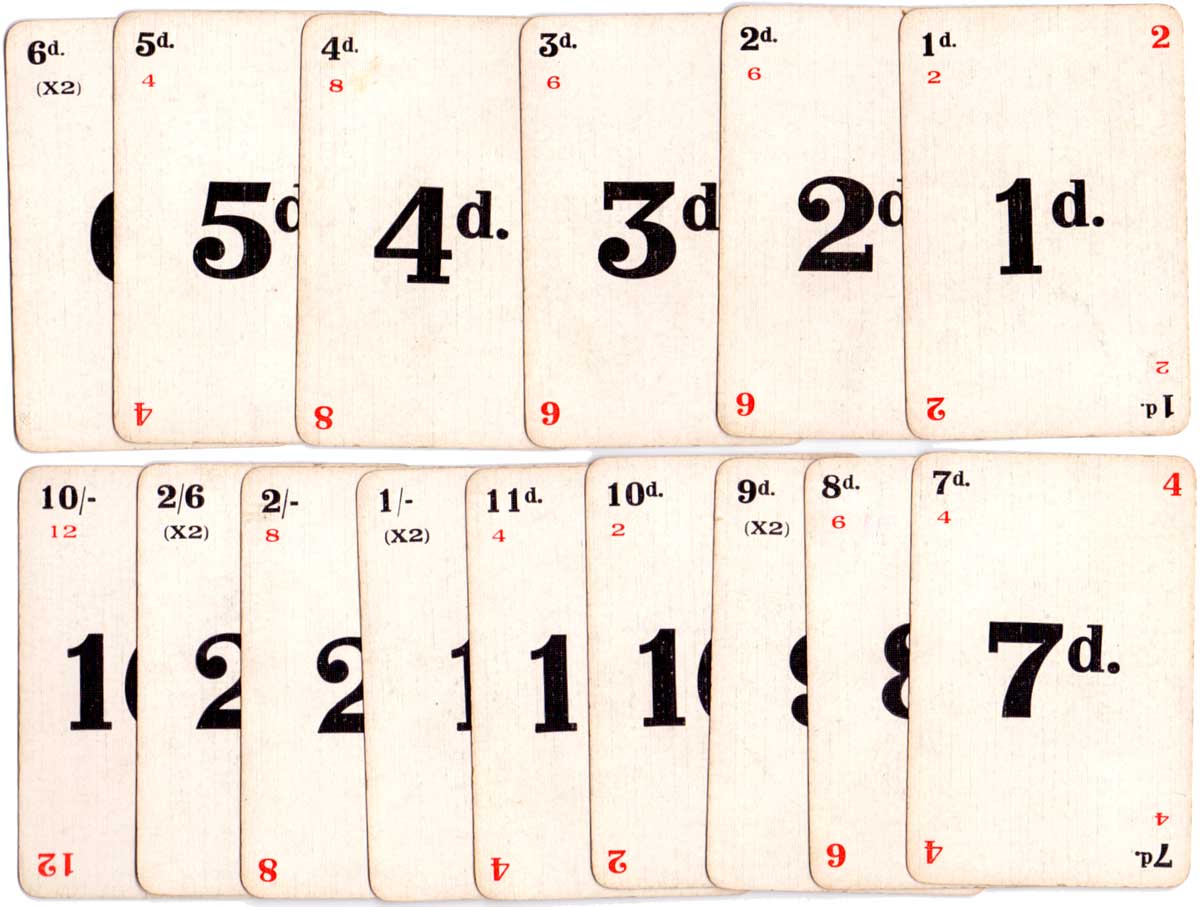
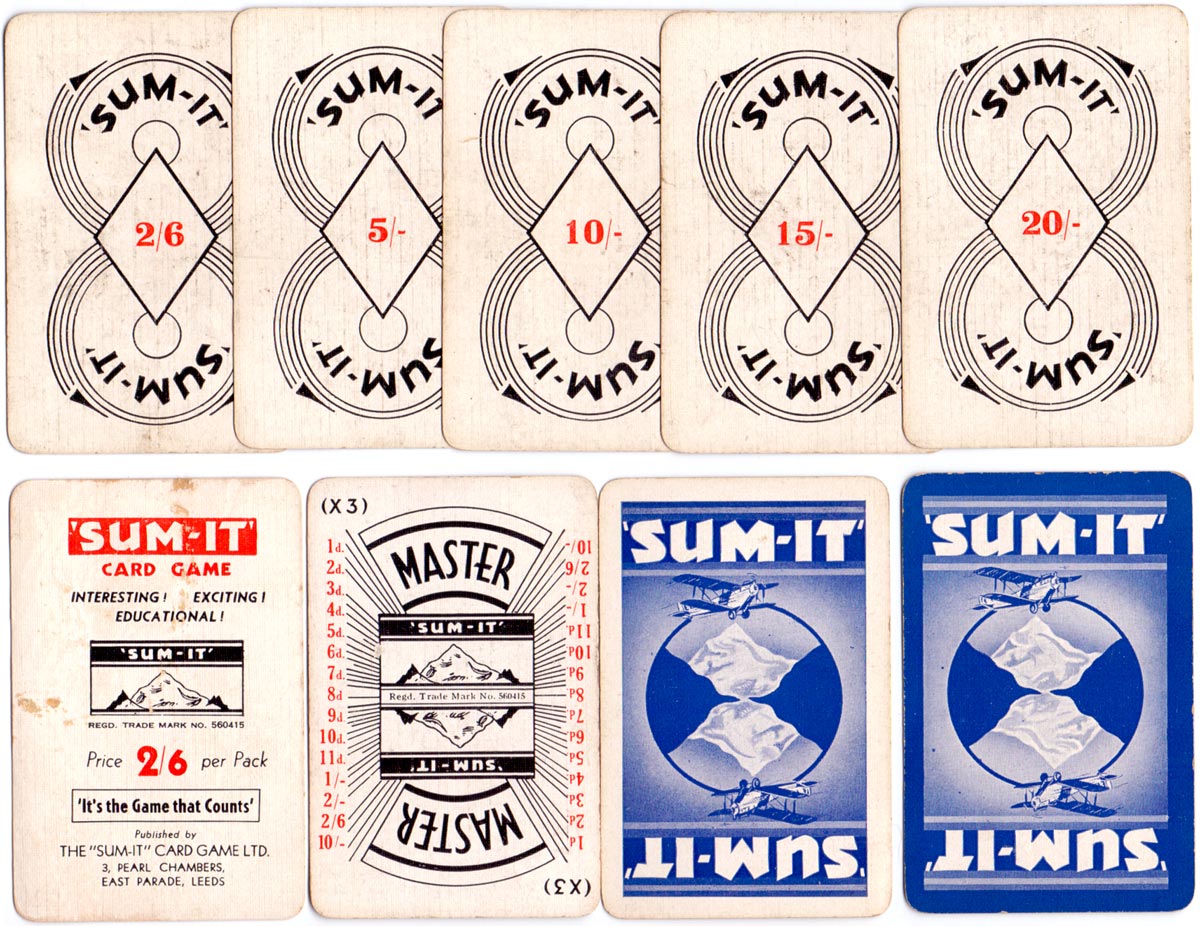
Above: ‘Sum-it’ published by Sum-It Card Games Ltd., c.1935. The game has 60 cards. Fifty-two cards represent different amounts of money. Eight cards are called ‘sum cards’ and represent a total sum of money. The object of the game is to gain seven cards which total one of the amounts on a sum card. This version uses the old pre-decimal currency system of pounds, shillings and pence. Later versions used decimal currency or a mixture of the two.
The scoring is based on a penalty system. The winner of each round incurs no penalty but the other players must sum the penalty scores on each card (the smaller red figures) in their hands.
The game has been published in hard or soft boxes and with red or blue backs.
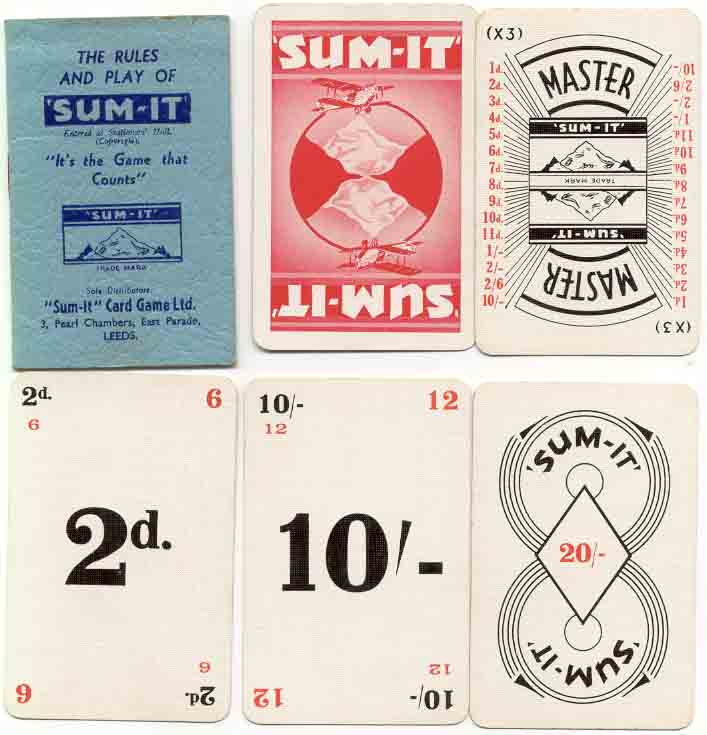
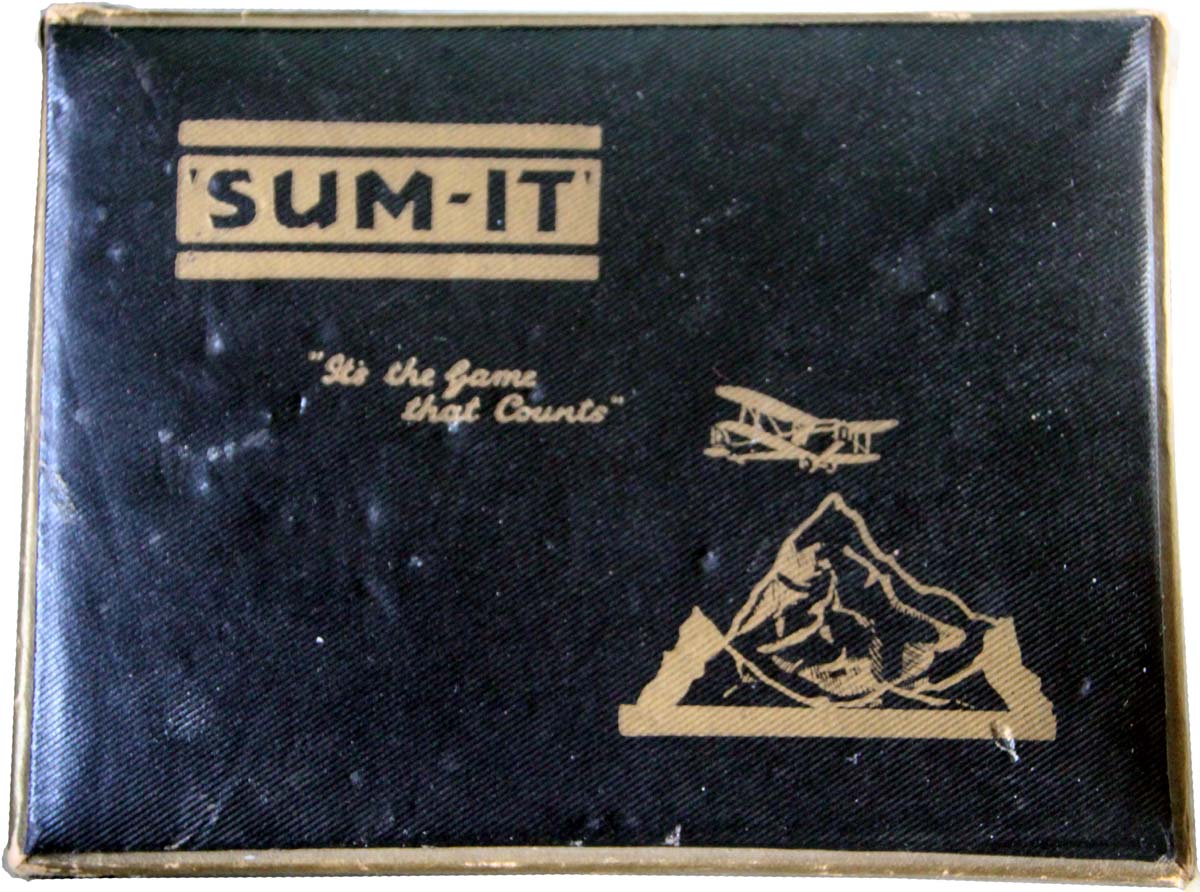
Above: double packs of ‘Sum-it’ contain one blue backed pack and one red backed with the same blue rules book. Image courtesy Rex Pitts.

By Simon Wintle
Member since February 01, 1996
I am the founder of The World of Playing Cards (est. 1996), a website dedicated to the history, artistry and cultural significance of playing cards and tarot. Over the years I have researched various areas of the subject, acquired and traded collections and contributed as a committee member of the IPCS and graphics editor of The Playing-Card journal. Having lived in Chile, England, Wales, and now Spain, these experiences have shaped my work and passion for playing cards. Amongst my achievements is producing a limited-edition replica of a 17th-century English pack using woodblocks and stencils—a labour of love. Today, the World of Playing Cards is a global collaborative project, with my son Adam serving as the technical driving force behind its development. His innovative efforts have helped shape the site into the thriving hub it is today. You are warmly invited to become a contributor and share your enthusiasm.
Related Articles

Scientific Whist
“Scientific Whist” : standard cards with instructions for play on the faces by Chas Goodall & Son, 1...

Agent Provocateur
Branded lingerie collection in a pack of pin-up playing cards.

Nimbus playing cards
Mike Steer’s weather-themed pack with suits in four colours and backs for cardistry.

Agatha Christie and Playing Cards revisited
Agatha Christie uses card-play as a primary focus of a story, and as a way of creating plots and mot...

The Decadent Deck
Studies in the eroticism of the female body by Inge Clayton.

Historic Shakespeare
“Historic Shakespeare” playing cards featuring Shakespearean characters by Chas Goodall & Son.

Copechat Paramount Sorting System
Preserving the past: a specimen deck showcasing edge-notched cards and their ingenious sorting syste...

Heartsette by Herbert Fitch & Co, 1893
A glimpse into a busy print and design office in late Victorian London.

Rap Rummy
Rap Rummy made by Parker Brothers in 1926, only 4 years after the discovery of King Tutankhamen’s to...

German Travel Cards
A travel-themed educational deck helping American tourists visiting Germany.

Batman® playing cards
Batman playing cards published by InterCol of London 1989.

Can You Believe Your Eyes?
“Can You Believe Your Eyes?” playing cards featuring visual illusions & other oddities.

Pastime Playing Cards for the Blind
The “Pastime” Playing Cards for the Blind manufactured by Goodall & Son Limd., c.1910.

The European Interchanges Quartets
A card game based around motorway intersections from European countries.

Songs with Flute accompaniment
Eighteenth century English engraved cards with music for voice and flute.

Love Tests
Vintage novelty “Love Test” cards of a slightly saucy nature but all in good fun!
Most Popular
Our top articles from the past 28 days

